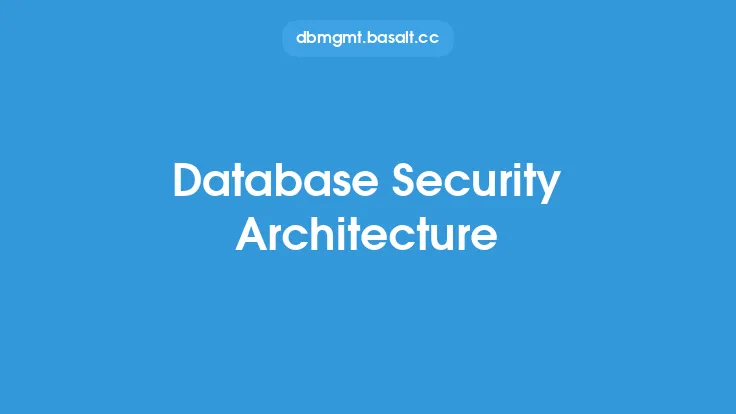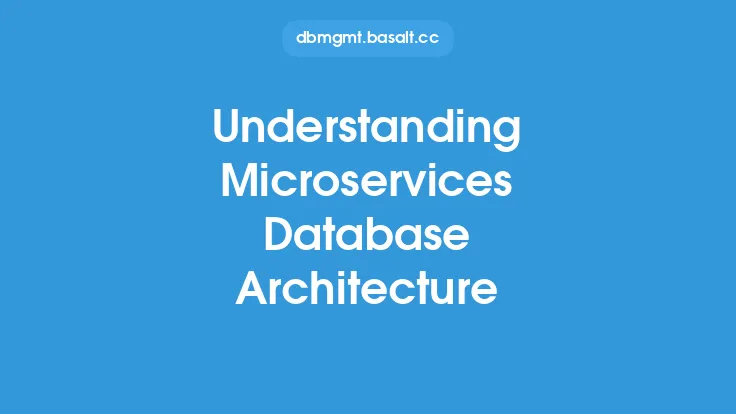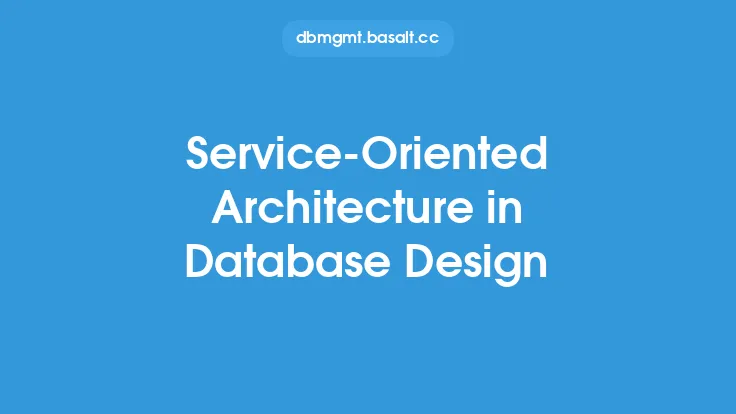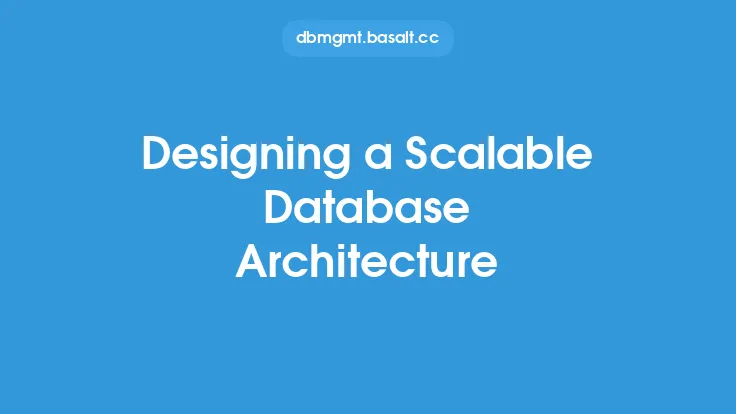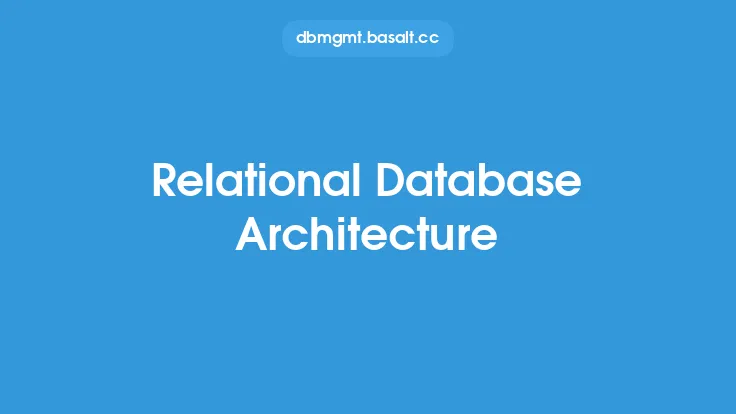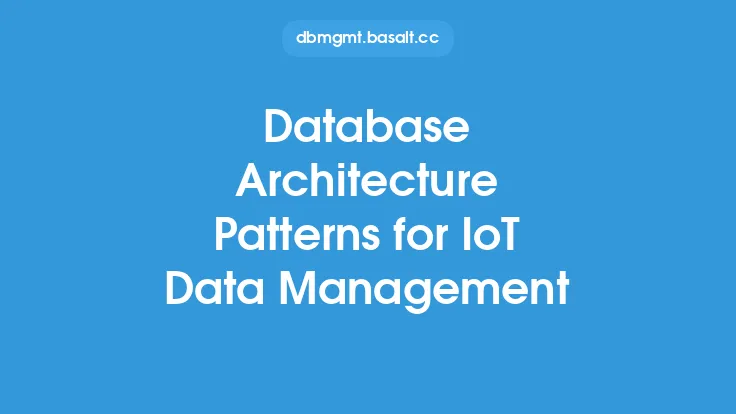NoSQL databases have become increasingly popular in recent years due to their ability to handle large amounts of unstructured and semi-structured data, as well as their scalability and flexibility. Unlike traditional relational databases, NoSQL databases do not use a fixed schema, which allows for more flexibility in terms of data modeling and schema design. In this article, we will delve into the architecture of NoSQL databases, exploring their key components, data models, and design principles.
Introduction to NoSQL Database Architecture
NoSQL databases are designed to handle large amounts of data that do not fit into the traditional relational database model. They are often used in big data and real-time web applications, where data is constantly being generated and needs to be processed quickly. NoSQL databases are typically characterized by their ability to scale horizontally, which means that they can handle increasing amounts of data and traffic by simply adding more nodes to the cluster. This is in contrast to traditional relational databases, which often become bottlenecked as the amount of data and traffic increases.
Key Components of NoSQL Database Architecture
NoSQL databases typically consist of several key components, including:
- Data Storage: This is the component that stores the actual data in the database. NoSQL databases often use a variety of storage engines, such as key-value stores, document-oriented stores, and column-family stores.
- Data Retrieval: This component is responsible for retrieving data from the database. NoSQL databases often use query languages, such as SQL or proprietary query languages, to retrieve data.
- Data Processing: This component is responsible for processing data in the database. NoSQL databases often use map-reduce or other distributed processing frameworks to process data.
- Cluster Management: This component is responsible for managing the cluster of nodes that make up the database. NoSQL databases often use distributed algorithms, such as gossip protocols or leader election algorithms, to manage the cluster.
NoSQL Data Models
NoSQL databases support a variety of data models, including:
- Key-Value Stores: These stores use a simple key-value pair to store data. Examples of key-value stores include Riak and Redis.
- Document-Oriented Stores: These stores use a document, such as a JSON or XML document, to store data. Examples of document-oriented stores include MongoDB and Couchbase.
- Column-Family Stores: These stores use a column-family, which is a set of related columns, to store data. Examples of column-family stores include Cassandra and HBase.
- Graph Databases: These databases use a graph data structure to store data. Examples of graph databases include Neo4j and Amazon Neptune.
Design Principles of NoSQL Database Architecture
NoSQL databases are designed with several key principles in mind, including:
- Scalability: NoSQL databases are designed to scale horizontally, which means that they can handle increasing amounts of data and traffic by simply adding more nodes to the cluster.
- Flexibility: NoSQL databases are designed to be flexible, which means that they can handle a variety of data models and schema designs.
- High Performance: NoSQL databases are designed to provide high performance, which means that they can handle large amounts of data and traffic quickly and efficiently.
- High Availability: NoSQL databases are designed to provide high availability, which means that they can continue to operate even in the event of node failures or other outages.
NoSQL Database Architecture Patterns
NoSQL databases often use several architecture patterns, including:
- Master-Slave Replication: This pattern involves replicating data from a master node to one or more slave nodes. This provides high availability and scalability.
- Peer-to-Peer Replication: This pattern involves replicating data between equal nodes. This provides high availability and scalability, as well as improved performance.
- Sharding: This pattern involves dividing data into smaller shards, which are then distributed across multiple nodes. This provides high scalability and performance.
- Caching: This pattern involves caching frequently accessed data in memory. This provides high performance and reduces the load on the database.
Challenges and Limitations of NoSQL Database Architecture
While NoSQL databases offer many advantages, they also have several challenges and limitations, including:
- Lack of Standardization: NoSQL databases often have proprietary query languages and data models, which can make it difficult to switch between databases.
- Limited Support for Transactions: NoSQL databases often have limited support for transactions, which can make it difficult to ensure data consistency.
- Limited Support for Querying: NoSQL databases often have limited support for querying, which can make it difficult to retrieve data.
- Limited Support for Data Modeling: NoSQL databases often have limited support for data modeling, which can make it difficult to design and implement a data model.
Best Practices for NoSQL Database Architecture
To get the most out of a NoSQL database, it's essential to follow several best practices, including:
- Choose the Right Data Model: Choose a data model that fits the needs of your application.
- Design for Scalability: Design your database to scale horizontally, which means that it can handle increasing amounts of data and traffic by simply adding more nodes to the cluster.
- Use Indexing and Caching: Use indexing and caching to improve performance and reduce the load on the database.
- Monitor and Optimize: Monitor your database regularly and optimize it as needed to ensure high performance and availability.
Conclusion
NoSQL databases offer a flexible and scalable alternative to traditional relational databases. By understanding the key components, data models, and design principles of NoSQL databases, developers and administrators can design and implement high-performance and highly available databases that meet the needs of their applications. While NoSQL databases have several challenges and limitations, following best practices and using the right architecture patterns can help to overcome these limitations and ensure success.
